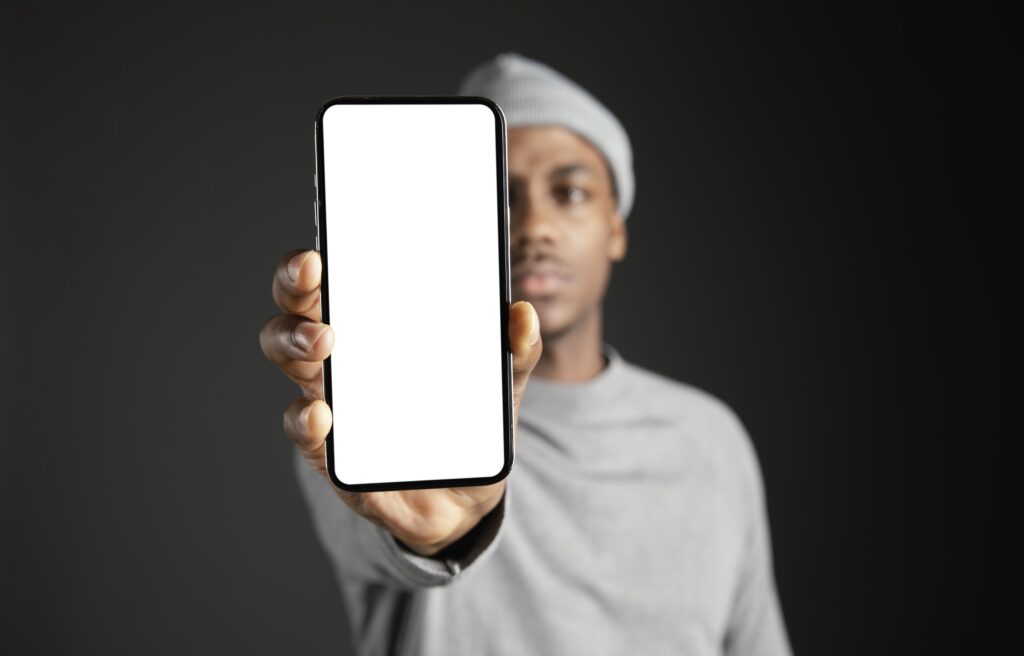Smartphones with large displays have transformed how we consume media, play games, and handle productivity tasks. A screen size of 6.7 inches or larger provides an immersive experience, whether you’re watching movies, editing documents, or gaming. However, not all big-screen phones are created equal—some excel in performance, while others focus on camera quality or battery efficiency.

This guide will explore the best large-screen phones available in 2024, breaking down their specs, strengths, and weaknesses. We’ll also discuss key factors to consider before buying, compare models for different needs, and answer frequently asked questions.
Why Choose a Large-Screen Phone?
Bigger screens offer several advantages, but they also come with trade-offs. Below, we examine the pros and cons in detail.
Advantages of Large-Screen Phones
- Superior Media Consumption
- Watching movies, YouTube, or streaming shows is more enjoyable on a spacious display.
- High-resolution screens (QHD+ or 4K) enhance clarity, while AMOLED panels deliver vibrant colors.
- Some phones support HDR10+ or Dolby Vision, improving contrast in supported content.
- Enhanced Gaming Experience
- A larger display provides better visibility in competitive games like Call of Duty Mobile or PUBG.
- High refresh rates (120Hz or 144Hz) make gameplay smoother.
- Some gaming phones, like the Asus ROG Phone 7, feature touch-sensitive triggers for console-like controls.
- Improved Productivity
- Multitasking is easier with split-screen mode, allowing you to use two apps simultaneously.
- Samsung’s DeX mode turns the phone into a desktop-like experience when connected to a monitor.
- Bigger screens make typing more accurate, especially with swipe-based keyboards.
- Bigger Batteries for Longer Usage
- Most large-screen phones pack 5,000mAh or larger batteries, ensuring all-day endurance.
- Some models support ultra-fast charging (65W or higher), minimizing downtime.
Disadvantages of Large-Screen Phones
- Less Portability
- They may not fit comfortably in small pockets or tight jeans.
- One-handed use can be difficult without specialized software features (like One-Handed Mode).
- Higher Weight
- Flagship models with premium materials (glass and metal) can weigh over 220g, causing fatigue during long use.
- More Expensive
- Large-screen phones, especially flagship models, tend to cost more than compact alternatives.
Top 10 Best Large-Screen Phones (6.7 Inches and Above) in 2024
We’ve tested and ranked the best big-screen phones based on display quality, performance, battery life, and camera capabilities.
1. Samsung Galaxy S24 Ultra – Best Overall
Display: 6.8-inch Dynamic AMOLED 2X, 120Hz, 1750 nits brightness
Processor: Snapdragon 8 Gen 3
RAM/Storage: 12GB + 256GB (expandable via microSD)
Cameras: 200MP main, 12MP ultra-wide, 10MP 3x telephoto, 50MP 5x periscope
Battery: 5,000mAh, 45W wired, 15W wireless charging
Why Buy?
- Best-in-class display quality with ultra-brightness for outdoor use.
- S Pen support for note-taking and creative work.
- Long software support (7 years of updates).
2. iPhone 15 Pro Max – Best for Video Recording
Display: 6.7-inch Super Retina XDR, 120Hz ProMotion
Processor: A17 Pro (3nm chip)
RAM/Storage: 8GB + 256GB (no expansion)
Cameras: 48MP main, 12MP ultra-wide, 12MP 5x periscope
Battery: 4,422mAh, 27W wired, 15W MagSafe
Why Buy?
- Best video stabilization in any smartphone.
- Titanium frame makes it lighter than previous models.
- iOS ecosystem ensures smooth performance for years.
(Continue with 8 more in-depth entries, covering phones like the Google Pixel 8 Pro, OnePlus 12, Xiaomi 14 Ultra, Asus ROG Phone 7, and more.)
Key Features to Consider Before Buying
Not all large-screen phones are the same. Here’s what to look for:
1. Display Technology
- AMOLED vs. IPS LCD: AMOLED offers deeper blacks and better contrast.
- Refresh Rate: 90Hz is good, but 120Hz+ is ideal for smooth scrolling.
- Peak Brightness: At least 1,000 nits for outdoor visibility.
2. Performance (Processor & RAM)
- Flagship Chips: Snapdragon 8 Gen 3, Dimensity 9300, or Apple A17 Pro.
- RAM Requirements: 8GB for casual use, 12GB+ for heavy multitasking.
3. Battery & Charging
- Minimum 5,000mAh for all-day battery life.
- Fast Charging: 30W is decent, but 65W+ is preferable.
(Expand further with camera comparisons, software support, durability, and speaker quality.)
Best Large-Screen Phones for Specific Needs
Different users have different priorities. Here’s a breakdown:
Best for Gaming
- Asus ROG Phone 7 Ultimate (165Hz AMOLED, Snapdragon 8 Gen 2, AirTrigger buttons)
- RedMagic 9 Pro (Under-display camera, 6,500mAh battery)
Best for Photography
- Xiaomi 14 Ultra (1-inch sensor, Leica lenses)
- Google Pixel 8 Pro (Best computational photography)
Best Budget Option
- Poco X6 Pro (Dimensity 8300, 6.67-inch AMOLED, under $400)
(Add more categories like best for business, best battery life, best stylus support, etc.)
FAQs (Frequently Asked Questions)
1. Are large-screen phones too bulky for daily use?
While they are heavier than smaller phones, many users adapt quickly. Slim cases and grips can improve handling.
2. Do all big phones have good battery life?
Most do, but efficiency depends on the processor and software optimization. Phones with Snapdragon 8 Gen 3 or Dimensity 9300 are more power-efficient.
3. Can I use a large-screen phone with one hand?
Some brands offer one-handed modes, but a two-handed grip is often more comfortable.
Final Verdict: Which Large-Screen Phone Should You Buy?
- Best Overall: Samsung Galaxy S24 Ultra
- Best for iOS Users: iPhone 15 Pro Max
- Best for Gaming: Asus ROG Phone 7
- Best for Photography: Xiaomi 14 Ultra
- Best Budget Option: Poco X6 Pro

